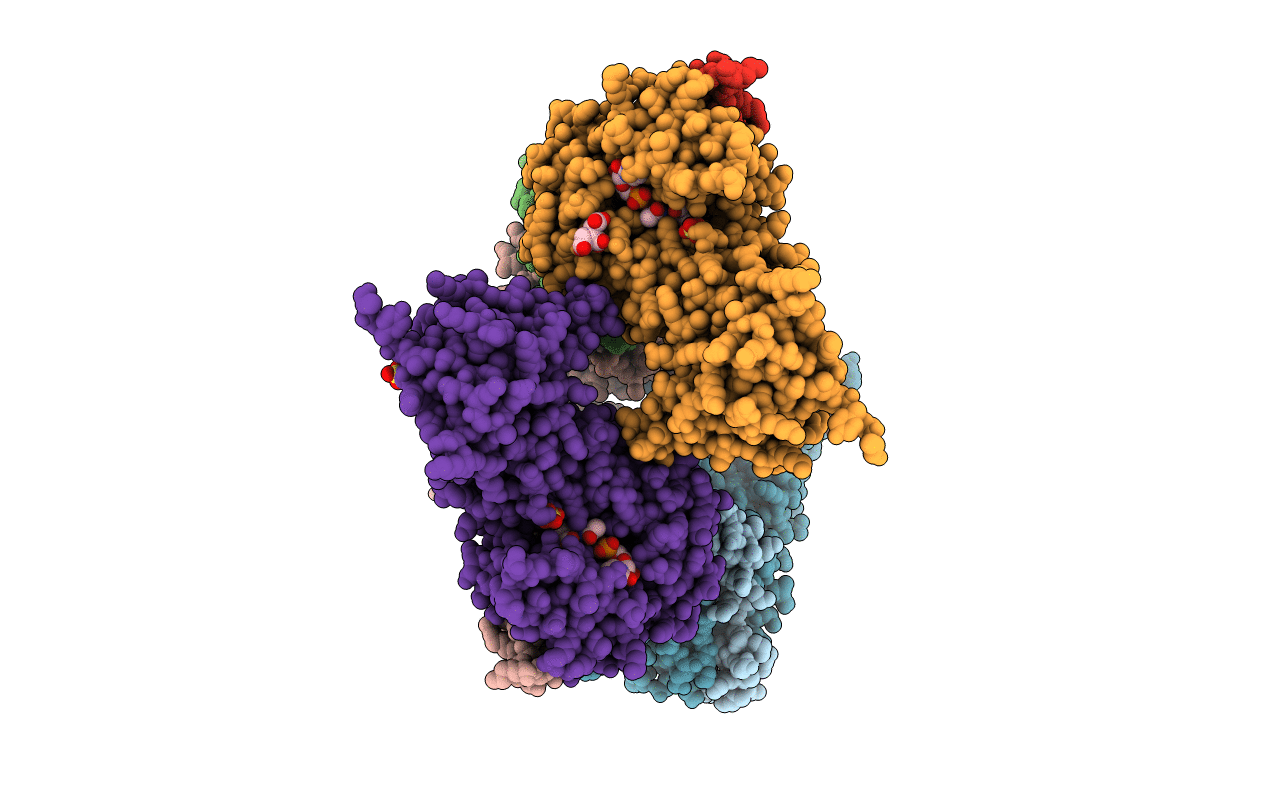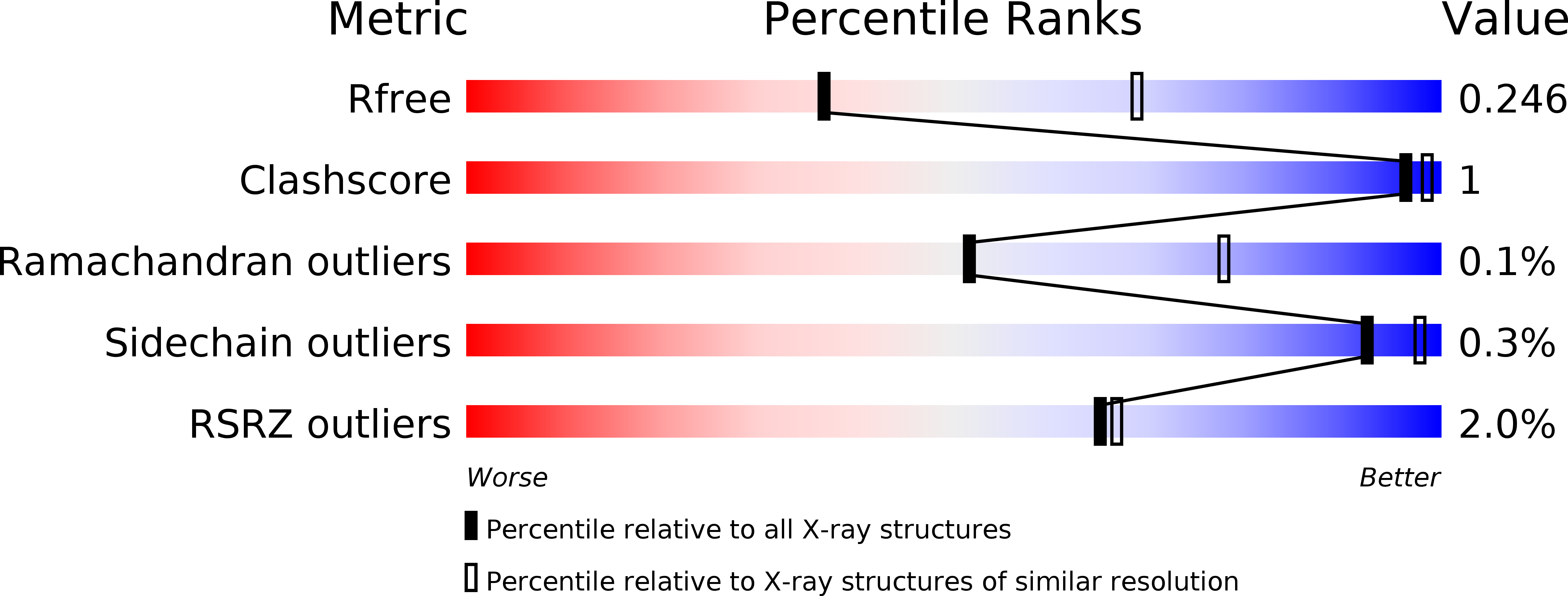
Deposition Date
2017-10-11
Release Date
2018-05-02
Last Version Date
2024-01-17
Entry Detail
PDB ID:
6EPH
Keywords:
Title:
Structure of the epsilon_1 / zeta_1 antitoxin toxin system from Neisseria gonorrhoeae in complex with UNAM.
Biological Source:
Source Organism:
Neisseria gonorrhoeae (Taxon ID: 485)
Host Organism:
Method Details:
Experimental Method:
Resolution:
2.70 Å
R-Value Free:
0.24
R-Value Work:
0.21
R-Value Observed:
0.22
Space Group:
P 1 21 1


